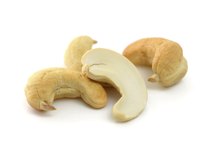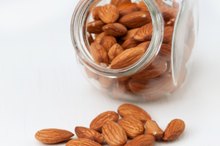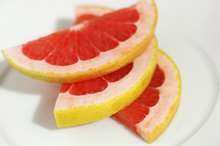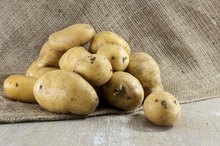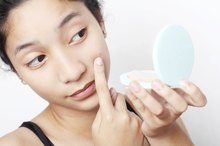What does fact checked mean?
At Healthfully, we strive to deliver objective content that is accurate and up-to-date. Our team periodically reviews articles in order to ensure content quality. The sources cited below consist of evidence from peer-reviewed journals, prominent medical organizations, academic associations, and government data.
The information contained on this site is for informational purposes only, and should not be used as a substitute for the advice of a professional health care provider. Please check with the appropriate physician regarding health questions and concerns. Although we strive to deliver accurate and up-to-date information, no guarantee to that effect is made.
Can Eating Chili Cause Acne?
The American Academy of Dermatology cites acne as the most common skin disorder in America 2. Pimples are closely associated with teenagers, but this skin problem can affect people into late adulthood, with almost 85 percent of the U.S. population having it at some point in their lives. Diet does not play a big role in acne, but certain foods may aggravate it, while some nutrients help relieve the condition.
Physical Causes
The main causes of acne are physical, with three contributing factors. The skin produces too much oil and sheds dead skin cells too rapidly, MayoClinic.com reports. The cells and oil block your hair follicles, and bacteria grows in the trapped oil, resulting in outbreaks of pimples. Cleanliness does not affect your probability of getting acne because dirt plays no role.
- The main causes of acne are physical, with three contributing factors.
- The cells and oil block your hair follicles, and bacteria grows in the trapped oil, resulting in outbreaks of pimples.
Dietary Causes
Foods Least Likely to Cause Acne
Learn More
Research has not definitely pinpointed dietary causes for acne, but things commonly blamed for causing the condition, such as chocolate and greasy foods, do not affect pimples. There may be a link to foods that increase blood sugar, such as bagels, bread and other high-starch items, according to MayoClinic.com. Typical chili recipes contain ingredients such as:
- ground beef
- beans
- tomatoes
- onions
- which do not boost blood sugar levels
- so chili does not contribute to pimples
Beneficial Nutrients
Some of the ingredients in chili contain nutrients known to help fight and prevent pimples. Chili recipes with lean ground beef may be beneficial, since lean meats contain vitamin B-3, which promotes healthy skin and blood circulation, according to Acne.com. Vitamin A is helpful, and it is found in liver, fish oil and dairy products. And vitamin B-2 is present in milk products, so topping your chili with low-fat cheese can be beneficial.
- Some of the ingredients in chili contain nutrients known to help fight and prevent pimples.
- And vitamin B-2 is present in milk products, so topping your chili with low-fat cheese can be beneficial.
Considerations
Which Nuts Are Good to Get Rid of Acne?
Learn More
Vitamin E and zinc help fight acne, but they are not present in notable quantities in chili ingredients. Peanuts, almonds, sunflower seeds, wheat germ, vegetable oil and broccoli are all rich in vitamin E, while good zinc sources include:
- nuts
- whole grains
- eggs
- mushrooms
- Acne.com advises
Fight your acne by eating a balanced diet that includes a wide range of foods and nutrients and avoids starches.
Treatment
Acne often requires treatment beyond dietary changes because severe pimples can leave lifelong scars. Effective over-the-counter remedies have salicylic acid, lactic acid, benzoyl peroxide, sulfur or resorcinol as their active ingredients, according to MayoClinic.com. Doctors can prescribe stronger medicated lotions, antibiotics and oral drugs for more persistent cases. More-aggressive treatment options include light and laser therapy, microdermabrasion and chemical peels.
- Acne often requires treatment beyond dietary changes because severe pimples can leave lifelong scars.
- More-aggressive treatment options include light and laser therapy, microdermabrasion and chemical peels.
Related Articles
References
- MayoClinic.com; Acne Causes; November 2009
- American Academy of Dermatology: Acne
- MayoClinic.com; Acne Treatments and Drugs; November 2009
- Magin P. A systematic review of the evidence for 'myths and misconceptions' in acne management: diet, face-washing and sunlight. Family Practice. 2004;22(1):62-70. doi:10.1093/fampra/cmh715
- Kraft J, Freiman A. Management of acne. Canadian Medical Association Journal. 2011;183(7):E430-E435. doi:10.1503/cmaj.090374
- Decker A, Graber EM. Over-the-counter acne treatments: a review. The Journal of clinical and aesthetic dermatology. 2012;5(5):32-40.
- American Academy of Dermatology Association. What can clear severe acne?
- Mukhopadhyay P. Cleansers and their role in various dermatological disorders. Indian J Dermatol. 2011;56(1):2-. doi:10.4103/0019-5154.77542
- Totri CR, Matiz C, Krakowski AC. Kids these days: urine as a home remedy for acne vulgaris? The Journal of clinical and aesthetic dermatology. 2015;8(10):47-8.
- American Academy of Dermatology Association. Back acne: how to see clearer skin.
- Hazarika N, Archana M. The psychosocial impact of acne vulgaris Indian J Dermatol. 2016;61(5):515-. doi:10.4103/0019-5154.190102
- Ayer, J. Acne: more than skin deep. Postgraduate Medical Journal. 2006;82(970):500-506. doi:10.1136/pgmj.2006.045377
Writer Bio
Based in Kissimmee, Fla., Barb Nefer is a freelance writer with over 20 years of experience. She is a mental health counselor, finance coach and travel agency owner. Her work has appeared in such magazines as "The Writer" and "Grit" and she authored the book, "So You Want to Be a Counselor."

